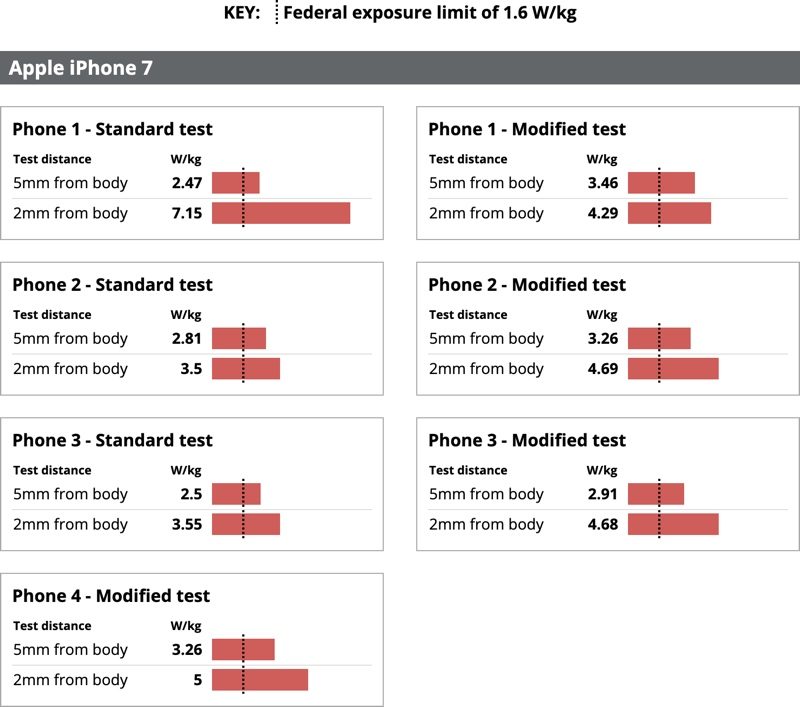
A newly-conducted test indicates that several different iPhone models released over the years actually surpass the regulatory safety limits when it comes to radiofrequency radiation levels. But Apple disputes the findings.
Both the report and the test were put together by The Chicago Tribune (via MacRumors). According to the publication, the test was conducted in an accredited lab and included several different phone models from various manufacturers. Each the phones were positioned under a clear liquid that was specifically created to simulate human tissue. Probes were then dropped into the liquid to test the radiofrequency radiation levels outputted by the devices.
With the push of a button, a robotic arm swung into action, sending a pencil-thin probe dipping into the tub. For 18 minutes, it repeatedly measured the amount of radiofrequency radiation the liquid was absorbing from the cellphone.
While various phones were tested, it’s the iPhone 7 that was called out for being the worst offender. Not only was the handset’s radiofrequency radiation levels over the safety limits, but they were actually double what Apple reported to federal regulators.

Apple, for its part, did have some comments. Specifically, the company says that the initial test did not have the proper sensors activate that are meant to reduce the radiofrequency radiation levels. In an effort to compensate for that, the publication says it made a modified test that “added steps intended to activate sensors designed to reduce the phones’ power”.
Still, while other iPhone models fell within the appropriate range –like the iPhone 8 Plus — the iPhone 7 did not. It was still above the legal limit.
Apple disputed not only the original test, but also the modified test. The company says that the publication did not test the phones in the same way that Apple does, and, as a result, the tests were not indicative of what the iPhone actually puts out.
Apple did not say how the tests differed, however.
Apple requested that The Chicago Tribune put forward questions in written form. Unfortunately Apple did not respond in time for publication, but did provide a follow-up, reiterating that the tests were inaccurate:
All iPhone models, including iPhone 7, are fully certified by the FCC and in every other country where iPhone is sold,” the statement said. “After careful review and subsequent validation of all iPhone models tested in the (Tribune) report, we confirmed we are in compliance and meet all applicable … exposure guidelines and limits.
For those curious, the iPhone X was only moderately above the acceptable range. The iPhone 8 managed to go over as well in some tests, while the iPhone 8 Plus stayed within the legal range.
Meanwhile, here’s the FCC’s statement on the matter, with the regulatory body moving forward with its own tests:
We take seriously any claims on non-compliance with the RF (radiofrequency) exposure standards and will be obtaining and testing the subject phones for compliance with FCC rules,” agency spokesman Neil Grace said.
Apple is not alone in this issue. Motorola, Vivo, and Samsung each had phones tested in the publication’s report. All of which had phones that went above the safety limit for radiofrequency radiation levels.
Now, there’s a catch worth mentioning here. Namely, that “consumers do not experience exposure like this”.
The phone was now operating at full power, creating what was essentially a worst-case scenario in terms of radiofrequency radiation exposure. Typically, Moulton said, consumers do not experience exposure like this. But it could happen, he said, in limited situations, such as someone talking continuously in an area with a weak connection.
So, there’s that.
Still, it will be interesting to see if anything comes from this. After The Chicago Tribune‘s report the FCC is going to conduct its own testing. Will there be repercussions for Apple (and the other companies) if their devices are found to actually exceed the safety limitations?
The full report is absolutely worth a read, so check it out.